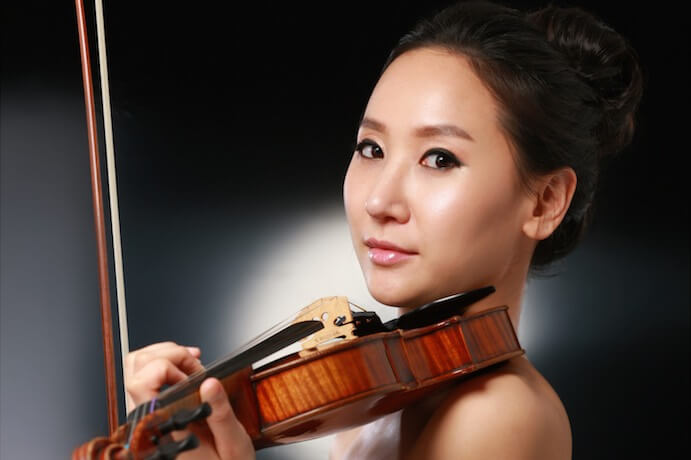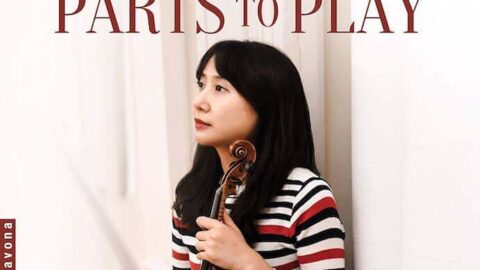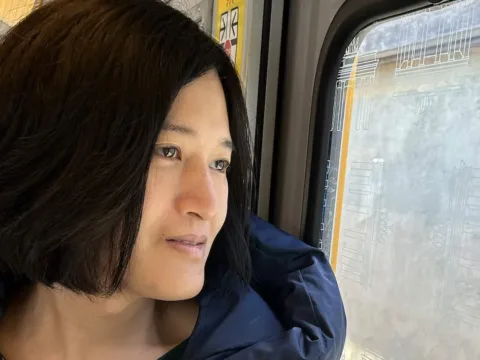Violinist Moonkyung Lee is firmly rooted in the classical tradition. Her first album, Tchaikovsky: Works for Violin & Orchestra, with the London Symphony Orchestra, appeared on Spotify’s “Classical New Releases” playlist upon its early 2017 release on Parma Recordings’s Navona imprint. It eventually received over 100,000 streams. For her follow-up, Parts to Play–released in June 2018 on Navona and featuring pianist Martha Locker–Lee has picked a mostly contemporary program. The album features works by living composers Timo Andres, Libby Larson, Judith Lang Zaimont, Rain Worthington, Michael Daugherty, and Benjamin Ellin alongside one work by Sergei Prokofiev. But wary fans of Lee’s previous work need not fear. There’s plenty of romanticism here, too.
Lee begins with Prokofiev’s Sonata for Solo Violin in D Major, Op. 115 from 1947, a work written with a pedagogical intent that follows classical forms. She takes a sprightly approach to the dancelike first movement, plays warmly and tenderly in the dolce second movement, and shows puckish spirit in the con brio finale. In some sections, she emphasizes the martial character of the music to the extent of crushing the sound, making the performance here somewhat weaker than on the rest of the album. Still, this is overall a well-characterized account of the piece.
The next piece is also a three-movement sonata in D major, but this one is for violin and piano and written in 2004 by Timo Andres. Simply titled Violin Sonata, it follows a classical structure with an opening sonata form movement, lyrical second movement, and scherzando finale. Its sound world encompasses simple, singable tonal melodies and brasher, jazzy writing with minor-major seventh chords and syncopated rhythms. In this texturally transparent work, the challenge is to play lightly, beautifully, and without affectation, which Lee accomplishes with help from pianist Martha Locker. Locker’s playing has a natural, straightforward feel, alternately sensitive and vigorous, while Lee’s playing here is relaxed and attentive.

Of note, the solo and duo works on Parts to Play seem to have been recorded quite differently, with a warmer violin sound captured on the duo works and a more brilliant but sometimes harsher sound on the solo works. There’s a certain logic to this, but a middle road might have created a more cohesive sound across the album.
Next are three short works for violin and piano, Libby Larsen’s Blue Piece (2010), Judith Lang Zaimont’s Grand Tarantella (1970), and Rain Worthington’s Jilted Tango (2009). Larsen’s Blue Piece is a short meditation in a blues-inflected D major, with a sly shift to D-flat major in the middle. Despite clocking in at under three minutes, it contains the best performance on the album. Here, Lee finds her most sensuous tone, drawing the listener in with a wide vibrato that blossoms into warm glissandi over mysterious, pedal-drenched chords in the piano.
Of the album’s duo selections, Zaimont’s Grand Tarantella demands the greatest variety of colors from both players and the most intricate ensemble work. Lee and Locker turn in robust performances as they move from a boisterous, contrapuntal tarantella–which gallops through a frenzied succession of keys–to an evocative, chorale-like muted section, and back.
Worthington’s Jilted Tango is a five-minute mid-tempo piece that the liner notes say is about the “push and pull in a dance of love,” which seems to be represented by a constant vacillation between A major and A minor. The piece simmers along without ever reaching a full boil, and Lee and Locker play in an appropriately restrained manner, adding just enough heat to the major-minor disagreements to evoke a couple raising their voices in an old, familiar argument.

The album closes with two more works for solo violin. Michael Daugherty’s short, groovy Viva (2012) provides a compelling platform for Lee, who emerges with high energy right out of the gate. With its fiddly open-string double stops and exciting, jazzy figuration, this piece would make for a great recital encore. In Benjamin Ellin’s three-movement Three States at Play (2012), the influence of Bartók is palpable, both in the pitch language and the string techniques used. Lee’s performance is convincing throughout, especially in the fiery folk dance of the last movement.
All in all, Parts to Play offers a fine opportunity for a traditional classical listener to dip their toes into the vast ocean of contemporary music. The repertoire here strives for simplicity and accessibility, sticking close to tonality and familiar structures while featuring a variety of influences. One may hope that Moonkyung Lee will continue to play her part as guide, and that her audience will follow her, whether she hones in on the most compelling works in the style or wades out into the depths.
























